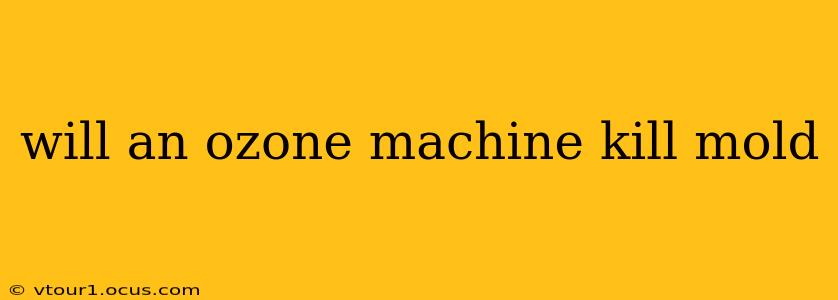Will an Ozone Machine Kill Mold? The Complex Truth
Ozone generators are marketed as powerful mold remediation tools, promising a quick and easy solution to mold infestations. However, the reality is far more nuanced. While ozone can kill mold, relying solely on an ozone machine for mold removal is generally not recommended and can even be counterproductive. Let's delve into the complexities.
How Does Ozone Work to Kill Mold?
Ozone (O3) is a highly reactive gas that breaks down organic matter, including mold spores and mycelia (the vegetative part of the fungus). The powerful oxidizing properties of ozone damage the cell walls of mold, effectively killing them. This is why it's sometimes used in industrial settings for disinfection.
Does Ozone Completely Remove Mold?
No. While ozone can kill mold, it doesn't remove the physical presence of mold. Dead mold can still release allergens and mycotoxins, potentially causing health problems. Furthermore, ozone doesn't penetrate porous materials effectively, meaning mold embedded deep within drywall, wood, or insulation might survive. Therefore, simply using an ozone machine might mask the problem, rather than solve it.
What are the Dangers of Using an Ozone Machine for Mold Remediation?
Ozone is a respiratory irritant, even at low concentrations. Prolonged exposure can lead to coughing, shortness of breath, chest pain, and other respiratory issues. Furthermore, ozone can damage certain materials, including some fabrics, plastics, and rubber.
Using an ozone generator without proper ventilation can significantly increase the indoor ozone concentration to unsafe levels. This is especially concerning for people with pre-existing respiratory conditions like asthma.
Can Ozone Machines be Part of a Mold Remediation Strategy?
In some very limited cases, ozone might play a supplementary role in a professional mold remediation plan. However, it should never be the primary method. A qualified mold remediation specialist will first address the underlying moisture problem causing the mold growth and then physically remove the mold using proper techniques. Ozone might be considered after the physical removal to help eliminate lingering spores, but only under strictly controlled conditions and with adequate ventilation.
How Do I Properly Remove Mold?
Proper mold removal requires a multifaceted approach:
- Identify and Address the Source of Moisture: This is the crucial first step. Fix leaks, improve ventilation, and address any other sources of excessive moisture.
- Professional Remediation (for Significant Mold Growth): If you have a significant mold problem, contact a certified mold remediation specialist. They have the expertise and equipment to safely remove mold and prevent its recurrence.
- Cleaning Small Mold Areas Yourself: For small areas of mold (less than 10 square feet), you can attempt cleaning yourself using a solution of water and detergent. Always wear protective gear, such as gloves, masks, and eye protection. Ensure proper ventilation during the cleaning process.
Is Ozone Safe Around Pets and Children?
No. Ozone is harmful to both pets and children, and they are more susceptible to its effects due to their smaller size and developing respiratory systems. Avoid using ozone generators in areas where pets or children spend significant time.
Are there alternatives to ozone machines for mold removal?
Yes, many effective and safe methods exist for mold remediation, including:
- Physical removal: Scrubbing affected surfaces with detergent and water.
- Professional remediation: Employing professionals to remove larger mold infestations.
- Antimicrobial treatments: Using specialized products to inhibit mold growth.
In conclusion, while ozone can kill mold, it's not a safe or effective standalone solution for mold remediation. Prioritizing moisture control, physical mold removal, and professional help where needed remains the best approach to ensuring a safe and mold-free environment. Always err on the side of caution and consult with professionals for significant mold problems.
